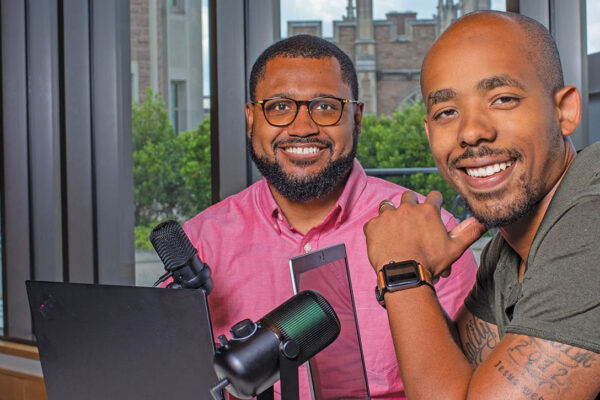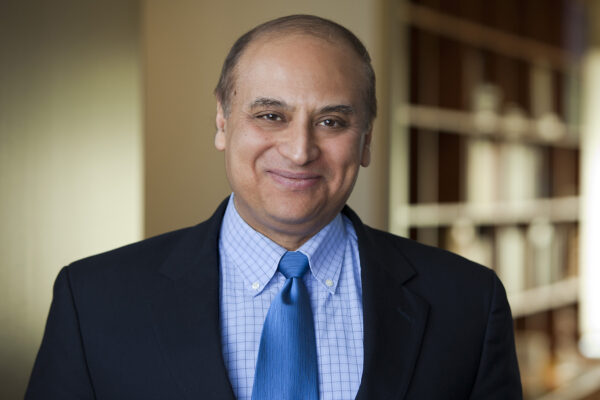Some people say that the WashU way is uniquely defined by its Midwestern humility, and I now consider myself a native St. Louisan. But when I first saw the National Institutes of Health funding report this year, I was overcome with more than a little humble pride and the competitive juices perhaps still emanating from my Philadelphia roots.
I track our NIH funding very closely, and I knew we had great momentum over these past few years. Still, I was truly astonished when I saw the total number of $575.8 million for federal fiscal year (FFY) 2021 and that we had surpassed medical research institutions with which we collaborate and that we deeply respect, like the University of Pennsylvania, Stanford University and Johns Hopkins University.
Our goal has never been getting grants per se, but rather has always been about curing disease and improving human health. We do this in large part through our discovery capabilities, with knowledge that advances in the lab and leads to new therapies and innovations for improving patient care. But grants allow us to do more of this work and to do it at the level of excellence that all have come to expect from WashU. That is why this news is so incredibly exciting and gratifying.
What’s more impressive is how we are growing: an increase in NIH funding of nearly $88 million over FFY2020. Our current funding level is also an all-time high for the school and our sixth consecutive year of growth in NIH grant awards. Since 2016, our NIH funding has grown by more than $200 million, which represents an increase of 54% and a compound annual growth rate of over 9%. And the support from NIH contributes to how we have been able to invest even more of our institutional resources in research projects and capabilities. Research grants to the School of Medicine from all sources totaled nearly $750 million in our FY2021. Together with increased institutional support, the total -annual investment in research has reached well over $1 billion.
Because NIH funding is publicly available and easily validated, we, as well as many of our peer institutions, use it as a metric of success rather than other popular ranking metrics, such as U.S. News, that include data that is not verifiable.
Most important to me is that these awards reflect the exceptional competitiveness of the science at our school and provide the basis for being confident in how we are pursuing our core values and vision for the future, using our scientific capabilities to improve the health and economy of our communities.
So how did we get to this exhilarating moment?
It is due to many years of attracting and supporting very talented and dedicated people, including faculty, students, trainees and staff at all levels. Long before I took on this role, the leadership of this school and university invested in research as a core mission in a special foundational way that promotes the highest possible quality and transformational potential of its scientific endeavors. These last few years of growth in grant awards reflect the remarkable depth and breadth of the talent here at the School of Medicine.
“We invest in education and research to bring improvements to clinical care, better outcomes for patients and better health for the community. In turn, our clinicians identify important areas for study.”
David Perlmutter, MD
It is no coincidence that we are home to a history of groundbreaking publications and successful NIH funding. We continue to build on that foundation today through the leadership of the Executive Faculty and the power of its shared governance model. Each of our department heads has figured out ways to invest more in the research and clinical programs of their departments, to bring in new recruits and to explore new research areas. We have also benefited from the BJC Investigators program, which added six brilliant leaders in science to our faculty and will bring in four more BJC investigators in the coming years. This dedication to the big picture of scientific research along with the superb work of every individual who walks into a lab every day are the secret sauce of success here.
But it isn’t about our investment in labs alone. Because of who we are — our commitment to clinical, research and educational excellence — we believe in the “virtuous cycle” of academic medicine. We invest in education and research to bring improvements to clinical care, better outcomes for patients and better health for the community. In turn, our clinicians identify important areas for study. This culture of academic improvement is also a draw for more patient referrals and clinical research studies that distinguish what we do as a clinical provider.
Furthermore, the “virtuous cycle” of academic medicine is the paradigm that drives our vision for contributing to the future of St. Louis. At Washington University School of Medicine, we are always asking how we can have more impact on the community around us. How can we improve the health of our neighbors, urban and rural? How can we improve the economy in our city and the region, since we know that economic status plays such an important role in health outcomes? This is what my colleagues are doing every day and why it needs a shout-out from the rooftops.


